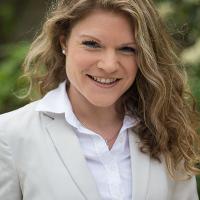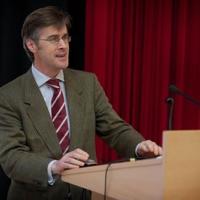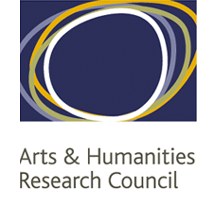The world’s security landscape is constantly changing. Each armed conflict embedded in it evolves in distinct ways. These changes range from the groups involved, the means used to the places affected. In some cases, non-state actors proliferate due to the fragmentation of existing groups, while others manifest processes of homogenisation. Some long-running conflicts have remained relatively constant in how they have been fought, whereas others have developed rapidly by increasingly relying on new technologies. Some conflicts have pushed towards and across borders, some have become urbanised, while others have moved into the cyberspace. Change also varies across space: both across regions and across conflicts within the same country. Finally, change in conflict is shaped by local cultures, yet embedded in shifting geopolitics, characterised by great power politics and a reshuffling of the balance of power through the (re-) emergence of new players. Such changes often appear bewildering and they remain under-researched. Security policies continue to adopt reactive approaches rather than anticipating new scenarios. Existing conflict, peace and stability indices facilitate tracing conflict over time, but do not explicitly address dynamic change in past, contemporary and future conflict. Based on traditional measures such as battle deaths, most assume a state-centric approach at a point when conflicts extend across state borders and are increasingly waged by a wide variety of non-state actors, many of whom consciously ignore or subvert existing states.
Project Objectives
This project addresses these issues by developing the “Changing Character of Conflict Platform”, a comprehensive knowledge base focused on the questions of how, when and in which direction conflict changes. Seeking to challenge unidimensional understandings of conflict that derive from adopting single disciplinary and epistemological approaches, we explore the dynamism and non-linear nature of change in armed conflict. We trace trends and directions of change in five dimensions of armed conflict, including transnational one: the actors involved, the methods used, the environments in which conflict is embedded, the resources used to fuel conflict and the impact it has on civilians. We identify "shapes" of conflicts to visualise how the proportions of various elements constituent of the dimensions are changing. This also serves to reveal the directions of change, both within each dimension and across several or all of them. By focusing on change rather than magnitude this project goes beyond current conflict indices which create country rankings and stigmatise those countries that are ranked least.
External Partners
External Collaborators, Advisors and Assistants
Professor Frances Stewart, Department of International Development, University of Oxford
Professor Arnim Langer, Faculty of Social Sciences, University of Leuven
Professor Keith Krause, Centre on Conflict, Development and Peacebuilding, Graduate Institute, Geneva
Professor Eduardo Lopez, Computational and Data Sciences Department, George Mason University
Dr Jota Samper, Program in Environmental Design, University of Colorado Boulder
Dr David Brenner, Department of Politics, University of Surrey
Howard Noble, Academic IT Research Support, University of Oxford
Martin Hadley, Academic IT Research Support, University of Oxford
Colonel Graham Fairclough (retd), Oxford Internet Institute, University of Oxford
Florence Oberholzer, Department of Economics, University of Oxford
Non-academic Partners and Collaborators
United Nations System Staff College
UK Ministry of Defence’s Development, Concepts and Doctrine Centre
New America Foundation
Project Outputs
Approach
Drawing on sources ranging from photographs, military doctrines, and audio-recordings of victims and perpetrators, to weapon registries and tweets, we bring together expertise, approaches and methods in ways not normally combined in conflict research. We integrate archival research, multi-year ethnographic fieldwork and expert interviews, analysis of visual representations of conflict, quantitative data analysis and mathematical modelling and software coding in order to promote a dialogue between quantitative and qualitative studies. It allows us to contrast how societies in which everyday life is shaped by violence perceive changes to, from and within armed conflict on the one hand, with externally imposed categories, on the other hand. We explore the various dimensions of change in conflict across and/or within several cases from across the globe. This includes analysing facets of those not normally considered under the category of “armed conflict” such as Mexico, of those that stand out due to their regionalised nature as in the African Great Lakes, those that are characterised by local, national, regional and international layers, as in Syria/Iraq, and several others with distinct characteristics such as Afghanistan, Burma, Colombia, Nigeria, Philippines, Somalia and Ukraine. We compare and complement these studies with the analysis of global quantitative data and situate them in the larger historical context since the late middle ages. The distinctive understanding of change in conflict that we develop is based on an innovative interdisciplinary conceptual framework which combines unique perspectives on change across (i) time, (ii) space and (iii) cultures.
(i) The temporal scope is from the fourteenth century to the present to account for long-term patterns in conflict. Most of current research on post-1945 conflicts is dominated by “Western” models of the state or international law; contingent on a specific historical context which itself is dynamic. Our historical view adopted through archival research facilitates more timeless constructs of universal validity.
(ii) The spatial scope is “glocal”. We combine a bottom-up approach with micro-perspectives on conflict obtained through ethnographic fieldwork, with the statistical analysis of large cross-country trends to embed local “non-Western” voices in contexts of shifting global power relations.
(iii) The perspective on culture accounts for perceptions of change and changes in perceptions by analysing representations of conflict in visual artwork and interpreting novel forms of visualisation of change in conflict with sense technology. Such an approach reinforces the nuanced picture of change and helps account for the visual renaissance that is taking place in our technology-driven Information Age.
Impact
We provide evidence-based guidance to understand and forecast the directions and pace of change in conflict, and thereby to assist in adapting responses to the ever-evolving security landscape in ways which will limit ongoing and future conflict, reduce human suffering, and save lives. On the one hand, this involves designing a practical analytical Changing Character of Conflict Tool with which security and defence practitioners such as UN staff can operationalise this novel understanding of change in armed conflict in their day-to-day work. On the other hand, we develop a dynamic software application that traces long-term trends. It is aimed at enabling decision makers, policymakers and analysts to anticipate the directions of change in conflict to support strategic planning.
A working paper by Hannah Shmidt and Annette Idler, entitled Bringing perceptions and experiences in: A novel approach to measuring changes in violent conflict, is available to read by clicking here.
You can also read a concept paper for the Inception Workshop on “The Changing Character of Conflict Platform: Understanding, Tracing and Forecasting Change across Time, Space and Cultures” (held on 26 May 2017 at the Department of Politics and International Relations, University of Oxford) by clicking here.






